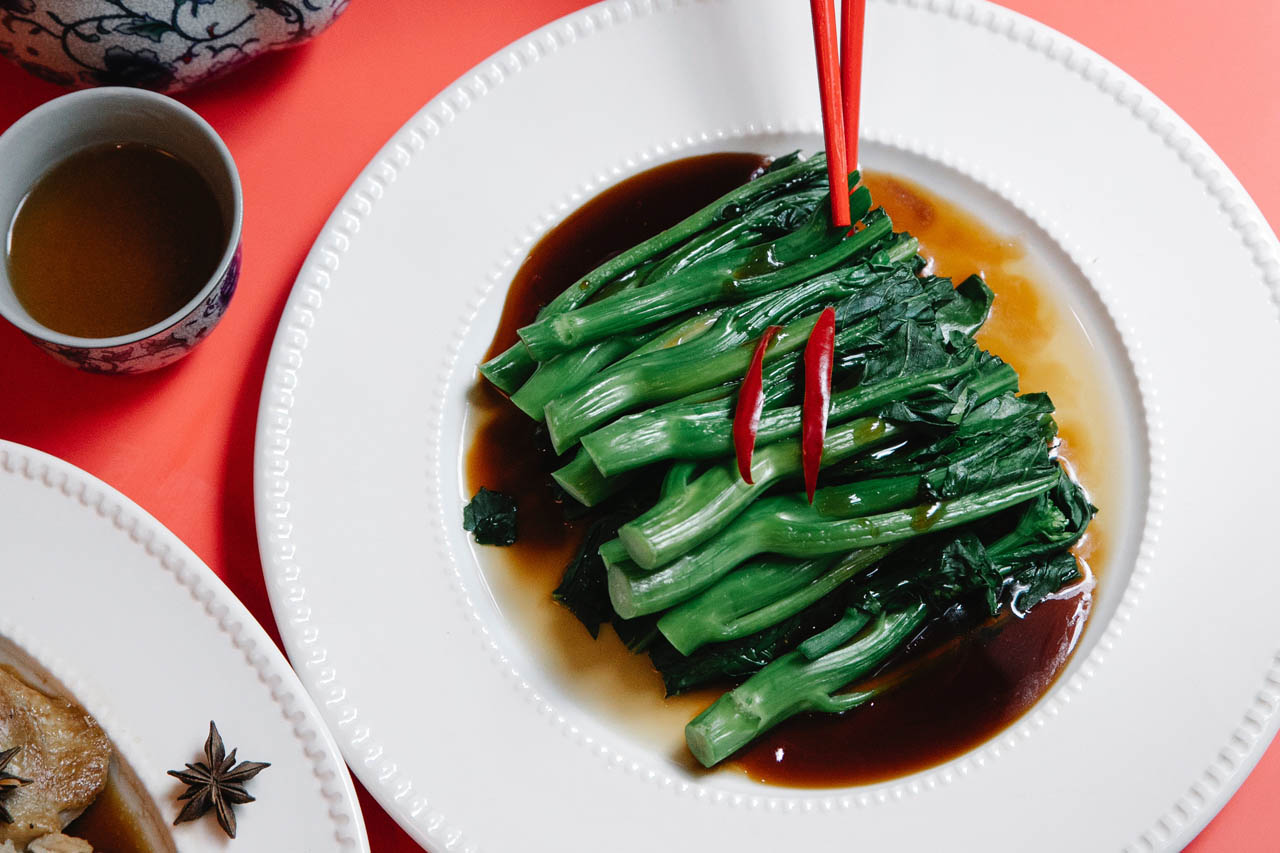
From the satisfying crunch of a sturdy stalk of gai lan (often called Chinese broccoli or flowering kale) to the delicate and yielding tenderness of dau miu (snow pea leaves or shoots), there’s a veritable cornucopia of Chinese greens out there for you to explore. Let’s take a look at a few common varieties that you’ll find in your local market or large-scale grocery store, and some tips and tricks to try them stir-fried, steamed, braised or even roasted.

Unsplash
Buying and storing
When buying Chinese vegetables, look for fresh green colour, without any yellowing or browning in the stem or leaves. Feel the leaves — they should be relatively clean and not slimy (a sure sign that the vegetable is doomed for the garbage sooner rather than later).

Pexels
Some supermarkets mist their vegetables to keep them fresh longer, so if the vegetable is super wet, place it upside down in your cart to drain as you shop (not on top of your other groceries!). Prop it on the counter to drain some more when you get home, and place a paper towel in the bag to absorb excess moisture before placing it in the vegetable crisper.
Prepping
When washing greens, the easiest way is to place them in a clean sink full of cold water and let them soak to get out the dirt and sand. Scoop the vegetables off the top as they float, rinse and repeat until there’s no more sediment on the bottom of the sink, ideally two or three times. Drain them in a colander until dry.

Unsplash
For vegetables with a firm stalk, such as gai lan or choy sum (flowering greens), trim the bottom of the stalk off, and remove leaves with browning tips. Some cooks also cut off the flowering yellow parts, although this is more for aesthetics, as these parts are edible.
For bulbous vegetables such as white stemmed bok choy, which is technically a cabbage, and its variations (baby bok choy and the green hued Shanghai offshoot), you can trim the bottom end off to cook individual leaves, or slice through the vegetable vertically so that the leaves remain together while cooking.

Pexels
For leafy vegetables, such as dau miu, trim the ends of the shoots and the curly tendrils, which can be tough. Chinese cabbage (either the yellow, rounded Napa or flatter, green Taiwanese version) can be treated much like lettuce, taking out the bottom core and either keeping the leaves whole or slicing or shredding into smaller pieces.
Cooking
Based on highly regional ingredients and preparation, Chinese recipes for vegetables can vary widely. Just as there are countless types of green vegetables used by cooks throughout China, there are specific methods of cooking that highlight the vegetable in its own way.
Stir-fried or seared simply with garlic, ginger and other aromatics, most greens take well to this treatment. With gai lan, Chinese cabbage, dau miu and even iceberg lettuce (often served cooked), cooking on high heat quickly allows the greens to retain their colour and slight crunch. When preparing vegetables for stir-frying or searing, you can cut them to bite sized pieces or leave them whole for a more dramatic preparation (quickly seared Chinese cabbage looks particularly pretty on a plate).
Pexels
Adding a little liquid to the cooking process results in steamed greens that are mid-way between the softness of braising and the crisp of a stir-fry. This method works best with greens that have a little structure to them, such as gai lan or halved bok choy. Finish it off with a drizzle of oyster sauce and few drops of roasted sesame oil for a savoury interplay with the slight sweetness of the greens.
Cooking greens in slightly more water or broth reveals the delicate textures of braised greens, often cooked in conjunction with small pieces of meat or tofu. Again, sturdier greens hold up better to the longer cooking process here.

Unsplash
Get the Recipe: Braised Baby Bok Choy.
A relatively low-key way to incorporate many of these greens into a prepared dish is to simply add them to soup, either as a garnish at the table or as part of a communal hotpot, where raw vegetables and meat are cooked in broth by diners.
Get the Recipe: Chinese Hot Pot.
If you want to eschew the stovetop completely, some greens can be served raw or pickled (gai choy, or mustard greens, are particularly nice prepared this way). Chinese cabbage or other more delicate options are often used by cooks around the globe for alternative preparations including slaws, salads or wraps.
Although it’s somewhat less traditional, roasting or grilling stalk or bulb based greens can produce charred edges with a slightly bitter counterpoint. The sheet pan method, using parchment paper for easy cleanup, gives similar results.
Once you’ve mastered these techniques, there are many more greens and methods to explore. Try adding a bunch of a new-to-you ingredients to your cart the next time you’re in the produce section, and customize them to your favourite flavours and tastes.
*Note: All vegetable names in this article are English phonetic translations of the Cantonese terms and may vary in terms of spelling, depending on the recipe, producer or grocer.

